cat Parent Prep
Preparing for Your New Companion(s)How do I prepare my space for a new cat?
First, watch this comprehensive video:
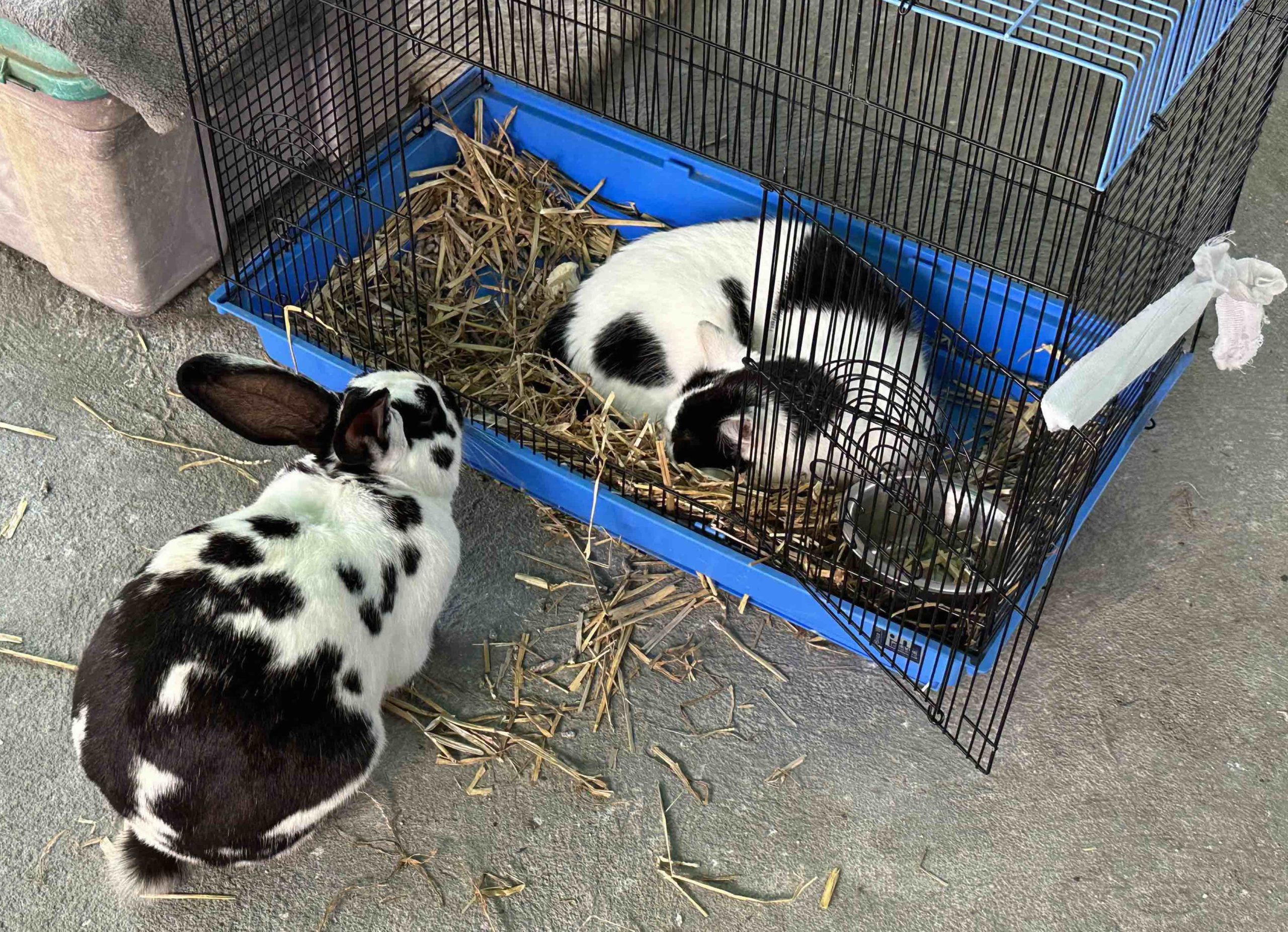
What items should I buy ahead of time?
Be sure that you have a sturdy carrier (one for each cat in your home), litterbox, litter, food, a soft bed or blankets and some scratchers (try both vertical and horizontal) and toys for your kitty. You might also consider a cat tree or kitty shelves to create vertical space (this is critical in a home with more than one cat), but you can always purchase this after your kitty is home.
Food
To begin, you might feed the cat the same food they have been eating in foster or in the shelter. Ask what the cat has been eating. You can then slowly transition them to another formula.
hidden
What food should I buy? Wet or dry?
Dry food can be very dangerous for cats as it is full of carbohydrates and is dehydrating. Cats do not naturally drink enough water (yes, even if it seems they drink a lot from their bowl or fountain) and when on a dry diet, they are at risk of urinary issues, kidney disease (one of the leading causes of death in cats), obesity, and diabetes as a result.
You may have heard that dry food helps clean cats’ teeth. There is not solid evidence on this and many cats do not chew their food. Cats should have regular dental care regardless.
We recommend a diet of at least 80 percent wet food. Save the dry kibbles for treats or a small snack.
Yes, we know that cats love dry food! It tastes delicious because it is sprayed with a tasty fatty substance. However, this does not mean that it is healthy for them. They will learn to love their wet food just as much in time.
Check out these related resources:
podcast episode on nutrition
How often will I feed my new cat?
Cats do best with meals 2-3 times per day. They do not need to graze throughout the day. Kittens should eat as much quantity as they like. For older cats, follow the instructions on the food cans. For wet food, you can increase the amount if the cat still seems hungry. Cats are in danger of overeating on dry food so if you do choose to feed dry, you might consider using it just as a treat or snack rather than a meal.
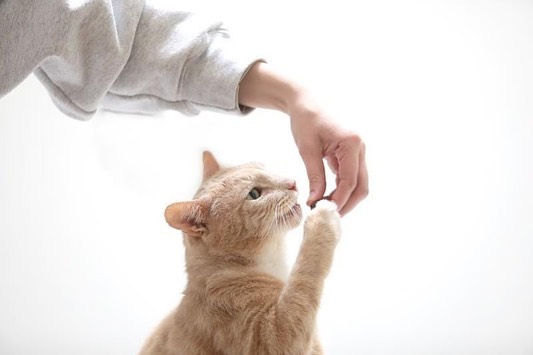
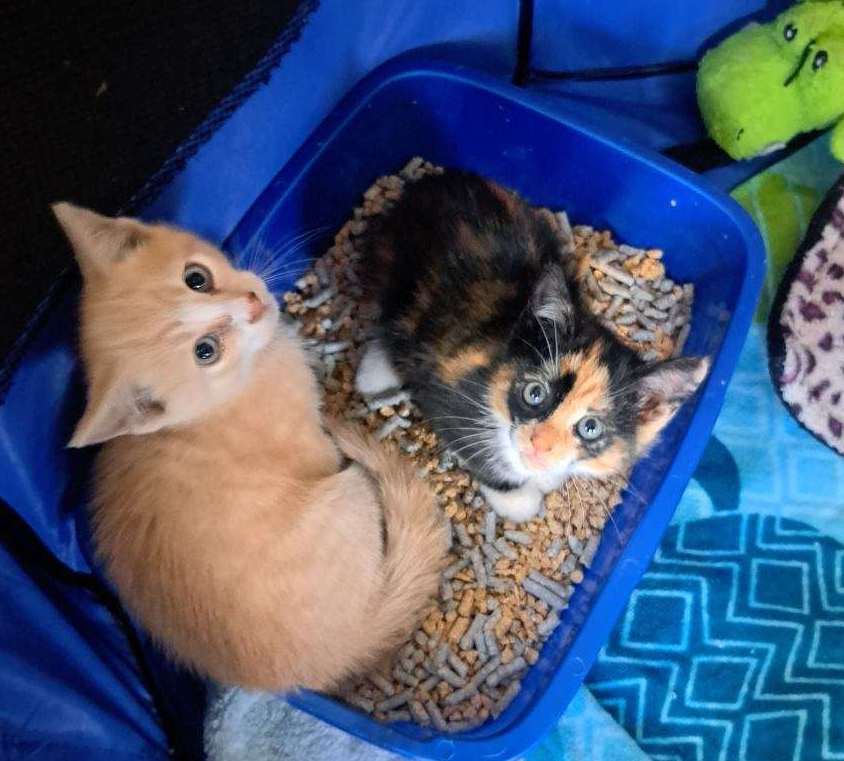
What kind of litter/boxes do I need?
While we humans might prefer a closed box, cats prefer an open box. This is especially important in homes where there might be cats who are feeling territorial and can potentially block the entrance or exit.
Cats coming from a shelter environment especially might not be familiar with a closed box. We recommend starting with an open box and you can add the top later once they’re settled in. If you are adopting a larger cat, make sure that the box is big enough so that they do not hang over the side.
You might consider multiple boxes if you have multiple cats in your home. While it may not look as “pretty” in your home, it will make your life much easier and it will be easier to keep things clean.
*We recommend against top-entry boxes. They are claustrophobic and many cats refuse to use them.
Cats have an instinct to dig and will naturally gravitate towards the box. They do not need to be litter trained. However, if you are worried, you might consider purchasing cat attract litter. You can sprinkle a bit over the litter that you plan to use for added incentive when transitioning a cat to your home.
How can I make my home environment safe for a new cat?
Cats in a new environment might be both curious and skittish all at once. For this reason, you will want your home to be secure, and to get all choking/strangulation hazards out of the way.
hidden
Keep all windows closed
A terrified cat can break through a screen, so keep windows closed or mostly closed (tennis ball sized opening or smaller for kittens) until the cat is fully settled in.
Rehome any poisonous plants
Check out the ASPCA plant guide and rehome any poisonous plants. Plants that only cause tummy upset can be monitored with your cat. Any plants in the lily family should be disposed of immediately–one taste (or even some pollen on your cat’s fur) can be lethal.
The ASPCA’s Toxic and Non-Toxic Plants
https://www.fda.gov/consumers/consumer-updates/keep-lilies-away-your-cats
https://be.chewy.com/which-plants-are-poisonous-to-cats-a-complete-guide/
Be mindful of bag handles
Be mindful of bag handles (paper, plastic, or cloth). Keep them tucked away so that your cat does not get stuck.
Secure Any Cords, Wires or Blinds Cords
If you have blinds cords, consider a blinds cord manager, or tape them to the wall to avoid any strangulation risk.
Try to manage your wires or secure them with cord managers or covers (this is more necessary with kittens).
Keep Toxic Foods Out of Reach
See this list of toxic foods and keep any of these items out of reach.
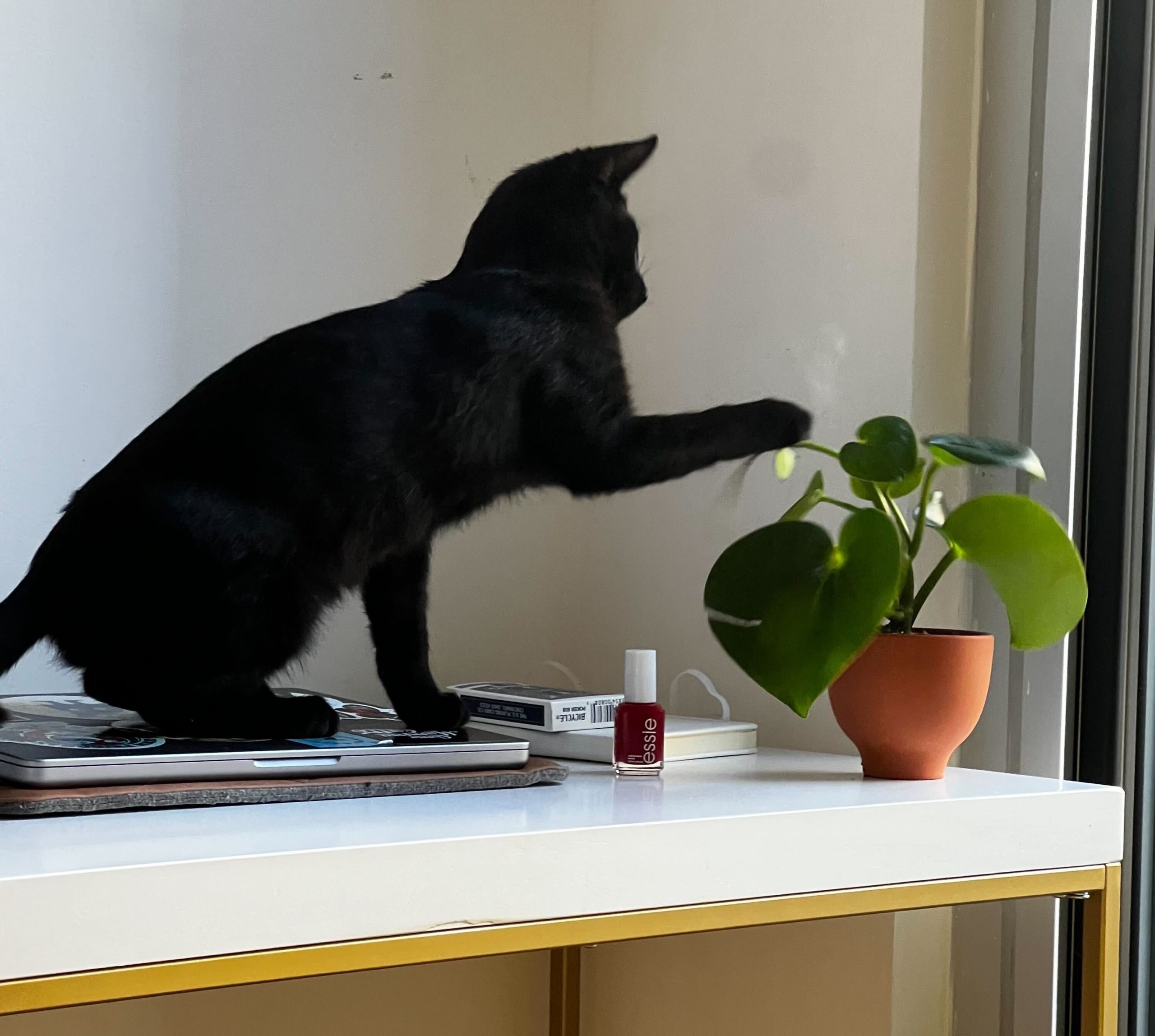
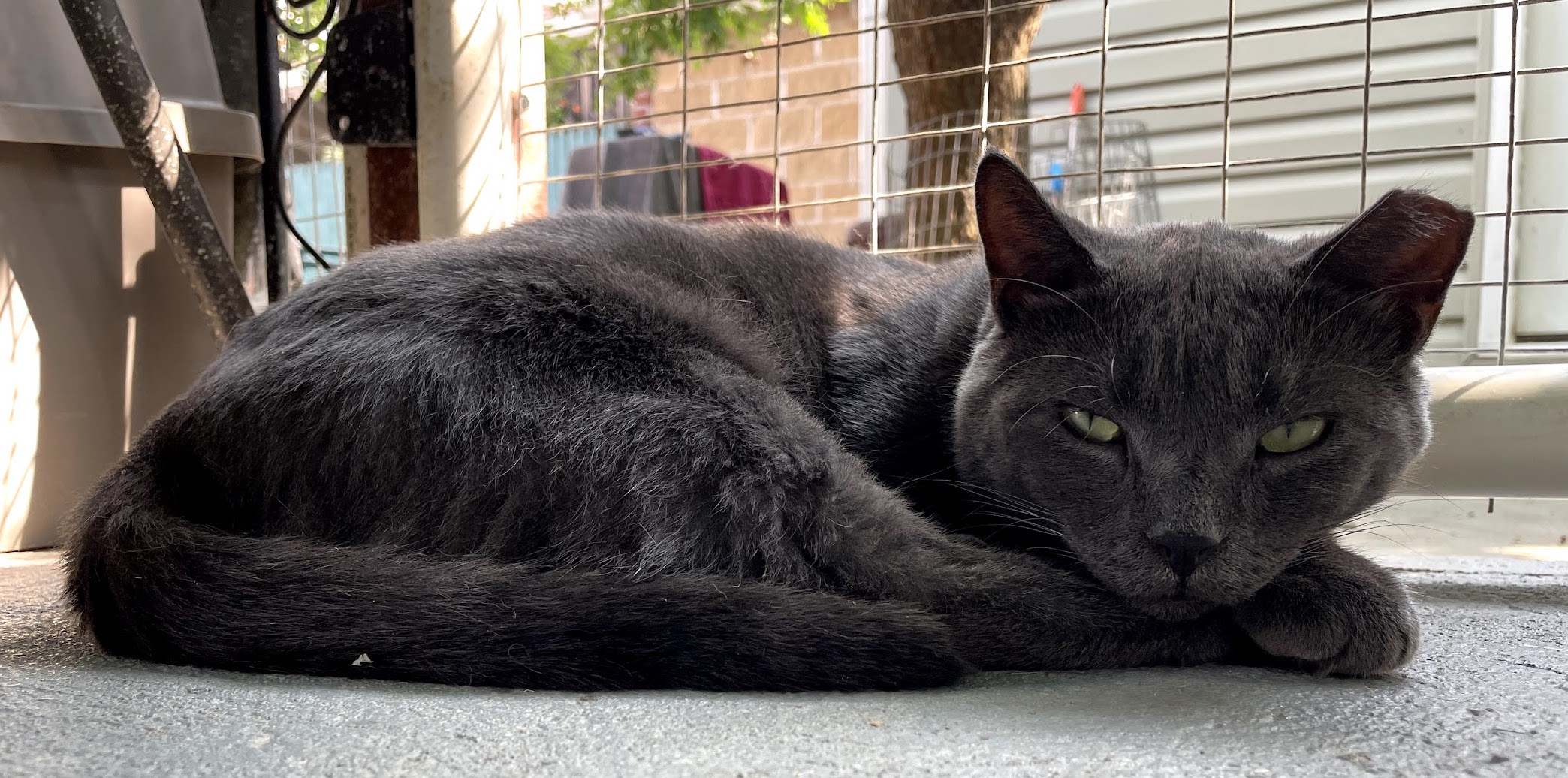
Will my cat be happy living indoors-only?
Absolutely. Puzzle toys, playtime, windows with a view, the creation of vertical space in your home, and kitty companions all provide fantastic enrichment for your cat. Your cat will also be safe. Outdoor cats are at the risk of poisoning, abuse, fights with other cats, cars, harm related to extreme temperatures, and more. You will be adding a potential average of ten years to your cat’s life by keeping them indoors.
Should I adopt one or two cats?
If you do not already have a cat at home, you might consider adopting a bonded pair. Two cats provide each other enrichment, socialization, and play that humans simply cannot replicate. Even if cats are not best friends, they can still provide company to each other when you are not home.
Two Cats Are Better Than One
Please note, too, that if you have a senior cat, they might not take kindly to a kitten, who will be full of energy and annoying zoomies. This may seem counterintuitive, but you might consider adopting a bonded pair of kittens rather than a solo kitten so that they have an energy outlet that is not solely focused on your older kitty.
Please note that we do have some cats available who prefer to fly solo. Ask us about our cats who would do best as an “only.”
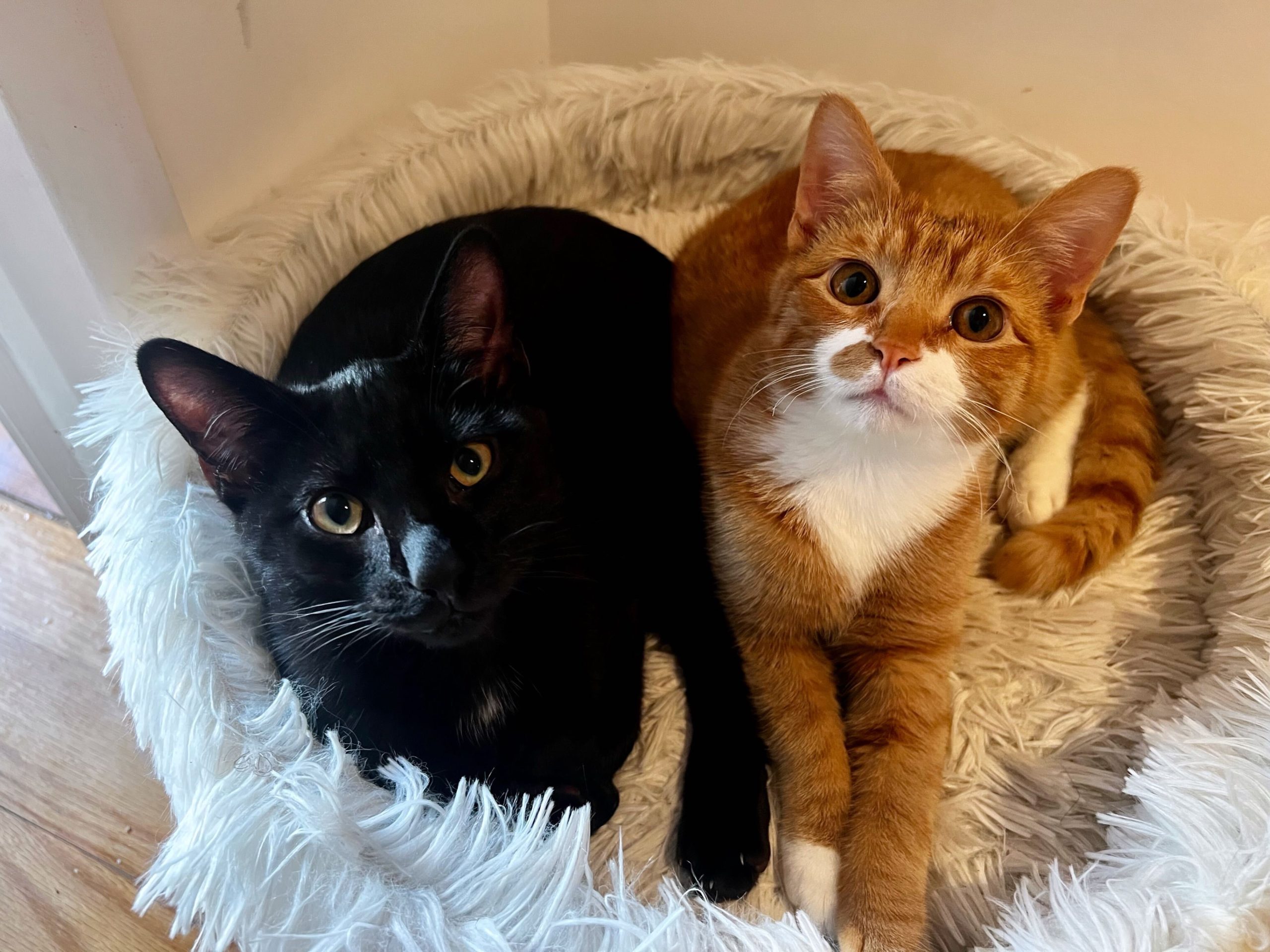
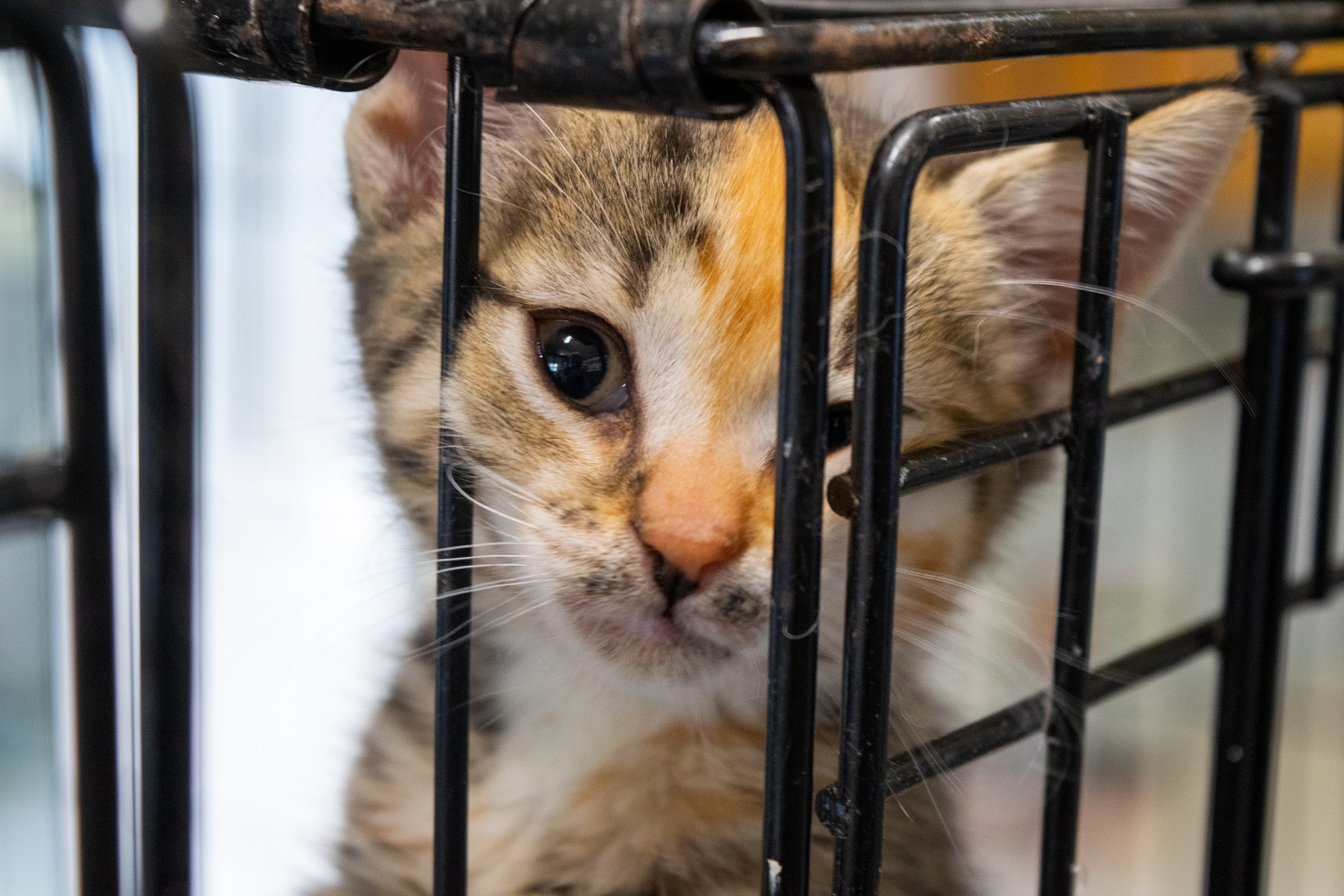
Why can’t I adopt a solo kitten?
The socialization element detailed above is especially important for cats under one year, as they learn from each other in ways that humans cannot teach! Additionally, kittens have LOADS of energy to expend. As much as we can play with them, nothing matches a good wrestling session with a buddy of their size. Studies show that many behavior issues in cats stem from what we call “single kitten syndrome.” Check out the resource below for more information:
https://meowcatrescue.org/resources/adoption-considerations/single-kitten-syndrome/
Any Other Questions
any other questions take a look at the following resources
- Cat Safety Essentials – a quick guide from For Animals Inc.(for fosters & parents)
- Cat Care 101- a guide for new cat parents & caretakers
- the ASPCA’s Toxic and Non-Toxic Plants list
- https://www.fda.gov/consumers/consumer-updates/keep-lilies-away-your-cats
- https://be.chewy.com/which-plants-are-poisonous-to-cats-a-complete-guide/
